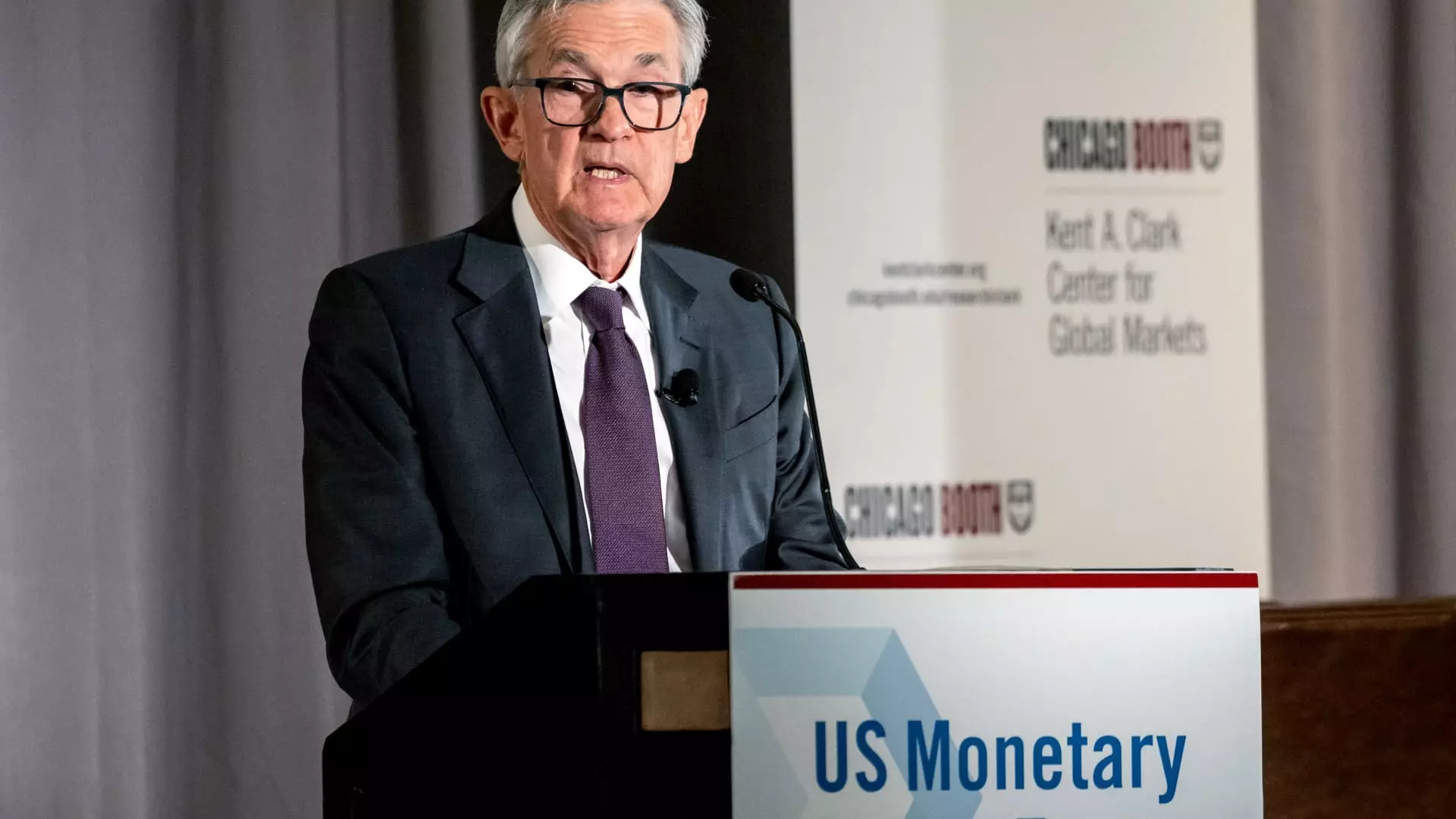Federal Reserve Chairman Jerome Powell’s recent remarks serve as a crucial reminder in a time rife with economic anxiety. As markets tremble at the implications of President Trump’s multifaceted policy changes—ranging from volatile trade tariffs to immigration reform—Powell’s insistence on a measured approach to monetary policy is both timely and necessary. Currently, the Federal Reserve stands at a pivotal juncture, where impulsive actions could exacerbate the already shaky foundation of confidence among investors. Powell has wisely concluded that clarity in economic direction should precede any hasty moves regarding interest rates.
Rather than immediate cuts that many market speculators anticipate, Powell advocates for a thorough analysis of how Trump’s initiatives will ultimately converge. The uncertainty surrounding these policy changes is palpable, making patience not just a virtue, but a strategic necessity. Interest rate decisions should not be influenced by mere speculation or immediate market jitters; they require a thoughtful assessment of real economic indicators.
The Double-Edged Sword of Tariffs
The ongoing discussions regarding tariffs illustrate one of the complexities Powell addresses. While the administration’s intent is to bolster American industry and protect domestic jobs, the reality is far more complicated. The risks associated with increased tariffs are manifold: potential disruptions in global supply chains, increased costs for consumers, and retaliatory measures from other countries can stifle growth rather than promote it. Powell’s acknowledgment of “uncertainty around the changes and their likely effects” emphasizes the need for caution in these turbulent waters.
The labor market may appear robust, as evidenced by recent job gains, yet shifts in inflation expectations fueled by tariff threats create a precarious balance. If Powell’s warning falls on deaf ears, hasty monetary policies could send shockwaves through the economy, potentially precipitating a downturn that could have been avoided.
Market Expectations vs. Economic Realities
The disconnect between market expectations and the economic realities Powell describes is striking. Traders appear to be convinced that the Fed will bend to the pressures of financial markets by implementing swift interest rate cuts. Powell, however, advocates for a holistic view—one that incorporates both short-term fluctuations in sentiment and long-term economic fundamentals. The challenges of achieving a stable 2% inflation target amid unpredictable policy changes must not be underestimated.
Indeed, while the markets remain jittery, Powell’s reassurance of a “solid labor market” and inflation trends edging toward targets serves as a glimmer of hope. Wages increasing faster than inflation—a noteworthy achievement—signals underlying economic strength that cannot be easily dismissed. The Fed’s current wait-and-see approach could well be the keystone of maintaining that momentum.
Macro Environment Remains Favorable
Despite the noise created by political machinations, Powell painted a positive macroeconomic picture during the U.S. Monetary Policy Forum. Describing the economy as being in “a good place,” Powell highlights factors that suggest resilience: a solid employment landscape and improving inflation measurements. Here, it is essential to note that while Theresa May’s rhetoric was fraught with fear, Powell chooses to spotlight the strengths that underpin the U.S. economy.
However, the cautious optimism must be tempered by vigilance. If the administration’s policies veer toward increasingly protectionist measures, any gains in economic stability could unravel. Hence, the Fed’s role as a stabilizing force becomes crucial, allowing for necessary adjustments without succumbing to the pressures of immediate market fluctuations.
Keen Attention to Inflation Trends
Powell’s insightful commentary on inflation serves as a warning to those who underestimate the potential downside risks inherent in today’s economic landscape. The Fed’s preferred inflation gauge running above the 2% mark posits a scenario where even mild fluctuations could pose significant challenges. It is inexcusable for policymakers to disregard the complexities of inflation’s trajectory; in fact, vigilant adaptation to these shifts may be paramount for sustained economic prosperity.
Fed Governor Adriana Kugler echoed this sentiment, cautioning about “important upside risks for inflation.” Consequently, the beginning of further policy adjustments must not resemble reckless gambling; instead, it necessitates a finely tuned understanding of economic dynamics to foster an environment conducive to growth.
Jerome Powell’s measured response to current economic challenges serves as a valuable lesson in the need for patience and clarity. Rather than yielding to the whims of market speculation, the Fed’s approach signals a commitment to thoughtful, evidence-based decision-making that prioritizes the broader economic context above all else. The path forward, while fraught with uncertainty, may yet hold opportunities for stability if approached with the requisite vigilance and diligence.

